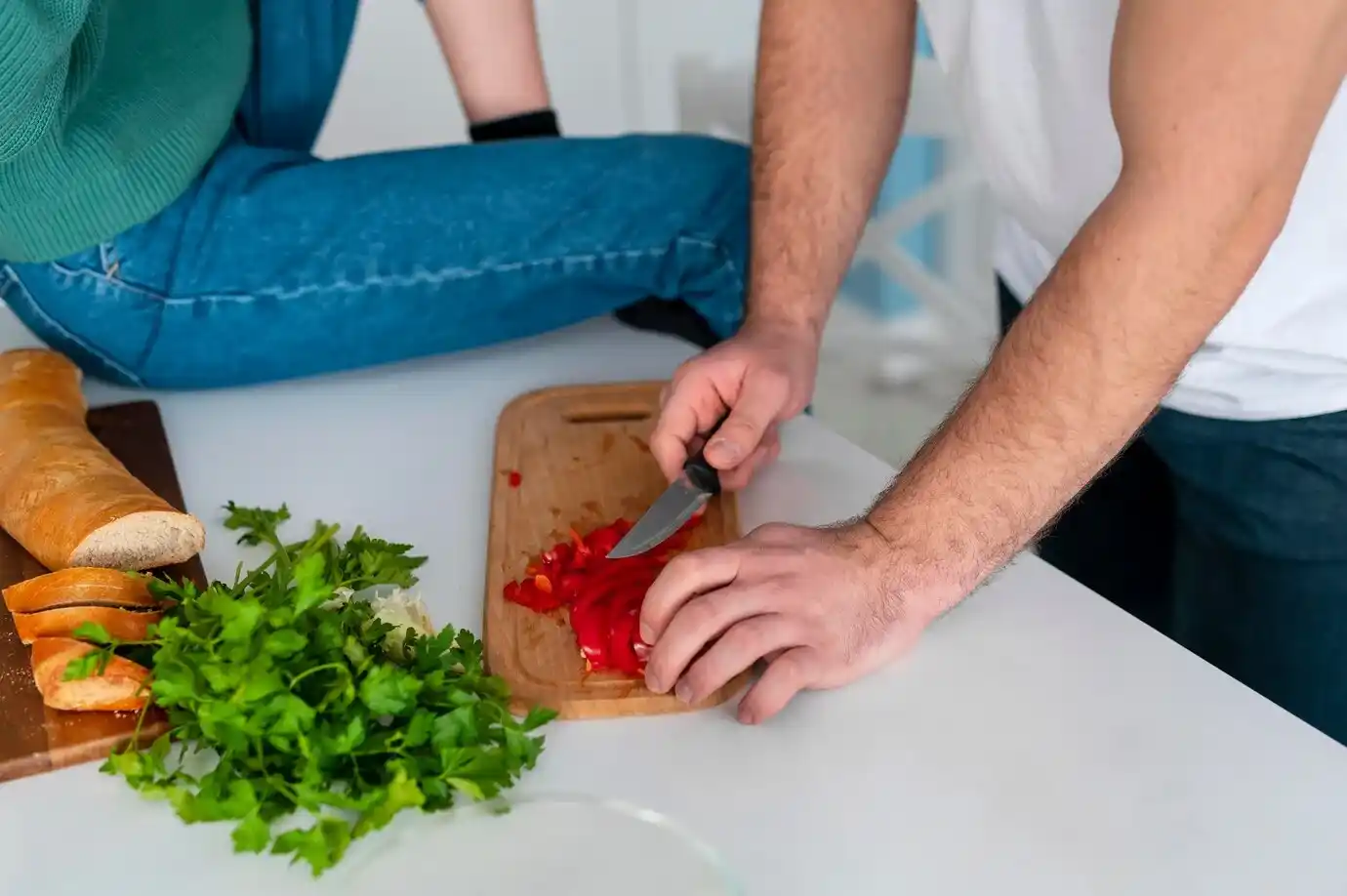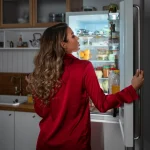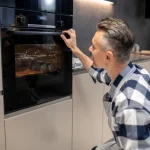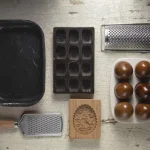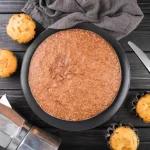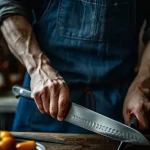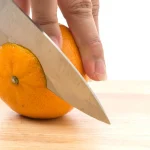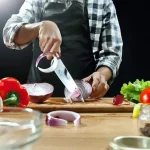Knife safety is crucial for every home cook, whether you’re an amateur or a seasoned chef. Proper knife handling prevents injuries and enhances your cooking efficiency. Let’s dive into essential knife handling tips, expert insights, and some personal anecdotes to make your kitchen experience safer and more enjoyable.
Understanding the Basics
Before we get into the nitty-gritty of knife safety, let’s understand the basics. A kitchen knife is a tool, and like any tool, it needs to be used correctly to be safe.
Sharp Knives are Safe Knives
Contrary to popular belief, a sharp knife is safer than a dull one. Jacques Pépin, a renowned chef, says, “A sharp knife is actually safer than a dull one. It requires less force and reduces the risk of accidents.” This is because a dull knife is more likely to slip while cutting, which can lead to injuries.
Proper Knife Grip
Holding the knife correctly is crucial. Thomas Keller, a chef and restaurateur, emphasizes, “Proper knife grip and posture are essential for safe and efficient cutting.” The best way to hold a knife is to grip the handle firmly with your dominant hand, with your thumb and index finger pinching the blade just in front of the handle. This grip provides better control and stability.
Use a Cutting Board
Always use a cutting board to protect your countertops and prevent the knife from slipping. Anthony Bourdain, an author and chef, advises, “Always use a cutting board and keep your knives sharp to minimize the risk of injury.” A stable cutting board also helps in maintaining the sharpness of your knife.
Knife Handling Techniques
Now that we’ve covered the basics, let’s explore some knife handling techniques that will make your kitchen safer.
Chopping and Slicing
When chopping or slicing, always keep your fingers tucked under and use the knuckles as a guide for the knife. This technique, often referred to as “the claw,” minimizes the risk of cutting your fingers.
Dicing and Mincing
For dicing and mincing, the rocking motion is your best friend. Place the tip of the knife on the cutting board and rock the blade back and forth while holding the food item with your other hand.
Peeling and Paring
When peeling or paring, always cut away from your body. This prevents accidental cuts if the knife slips.
Safety Tips for Home Cooks
Let’s get into some specific safety tips that will make your knife handling even safer.
Regular Maintenance
Keep your knives sharp. Julia Child, a culinary icon, advises, “Regularly inspect your knives for damage and have them sharpened by a professional if needed.” Sharp knives require less force to cut through food, reducing the risk of slips and injuries.
Proper Storage
Store your knives properly to prevent accidents. Knife blocks, magnetic strips, or drawer inserts are excellent options. Gordon Ramsay, a celebrity chef, warns, “Never leave a knife unattended, especially within reach of children or pets.”
Cleaning Knives Safely
Always hand wash your knives. Dishwashers can dull the blade and loosen the handle. When washing, never leave a knife submerged in soapy water where it can’t be seen, as this could lead to accidental cuts.
Teaching Knife Safety to Children
Teaching children about knife safety is essential. Julia Child said, “Teach children basic knife safety from a young age to prevent accidents.” Start with smaller, less sharp knives and supervise them closely until they are comfortable and skilled.
Unique Insights
I’ve had my fair share of kitchen mishaps, and I’ve learned valuable lessons along the way. One memorable experience was when I first started cooking and thought using a dull knife was safer. I was chopping onions, and the knife slipped, cutting my finger. It was a painful lesson that led me to invest in a good knife sharpener and prioritize keeping my knives sharp.
Another time, I was in a rush to prepare dinner and left my knife on the countertop. My curious cat jumped up and almost knocked it off. Luckily, I caught it in time, but it reminded me of Gordon Ramsay’s advice to never leave knives unattended, especially around pets.
Expert Insights and Resources
To further enhance your knife safety knowledge, here are some expert insights and resources.
Expert Quotes
- Jacques Pépin: “A sharp knife is actually safer than a dull one. It requires less force and reduces the risk of accidents.”
- Thomas Keller: “Proper knife grip and posture are essential for safe and efficient cutting.”
- Anthony Bourdain: “Always use a cutting board and keep your knives sharp to minimize the risk of injury.”
- Gordon Ramsay: “Never leave a knife unattended, especially within reach of children or pets.”
- Julia Child: “Teach children basic knife safety from a young age to prevent accidents.”
- America’s Test Kitchen: “Regularly inspect your knives for damage and have them sharpened by a professional if needed.”
Resources and Studies
While there may not be specific scientific studies on knife safety for home cooks, these resources offer valuable information and guidance:
- National Safety Council (NSC): The NSC provides data and information on home accidents, including kitchen-related injuries.
- Consumer Product Safety Commission (CPSC): The CPSC regulates consumer products and provides safety information, including knife safety guidelines.
- Culinary Schools: Culinary schools often incorporate comprehensive knife safety training into their curriculum.
- Home Improvement Stores: Stores like Home Depot and Lowe’s offer knife safety information and sell knife storage solutions.
Conclusion
Knife safety is a fundamental skill for every home cook. By understanding the basics, practicing proper techniques, and adhering to expert advice, you can make your kitchen a safer place. Remember, a sharp knife is a safe knife, and proper storage and maintenance are key to preventing accidents.
Incorporate these tips into your daily cooking routine, and you’ll not only enhance your safety but also improve your efficiency and enjoyment in the kitchen. Happy cooking!
Related Articles

